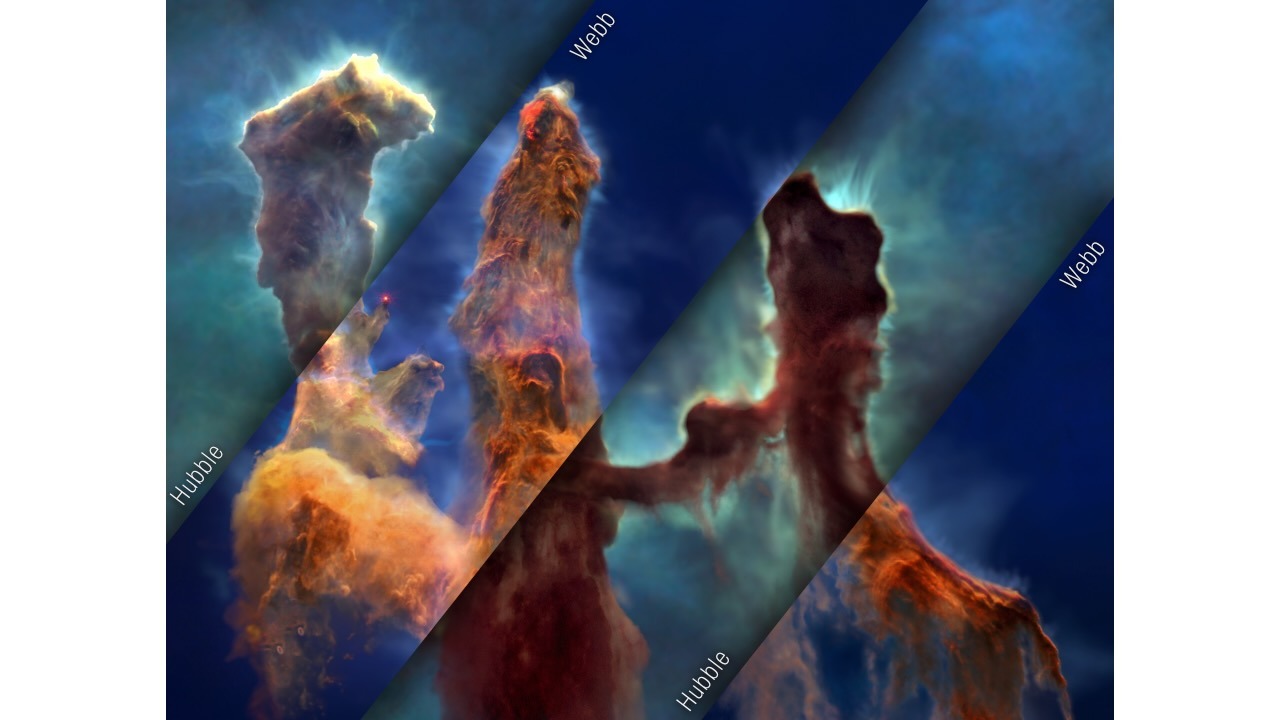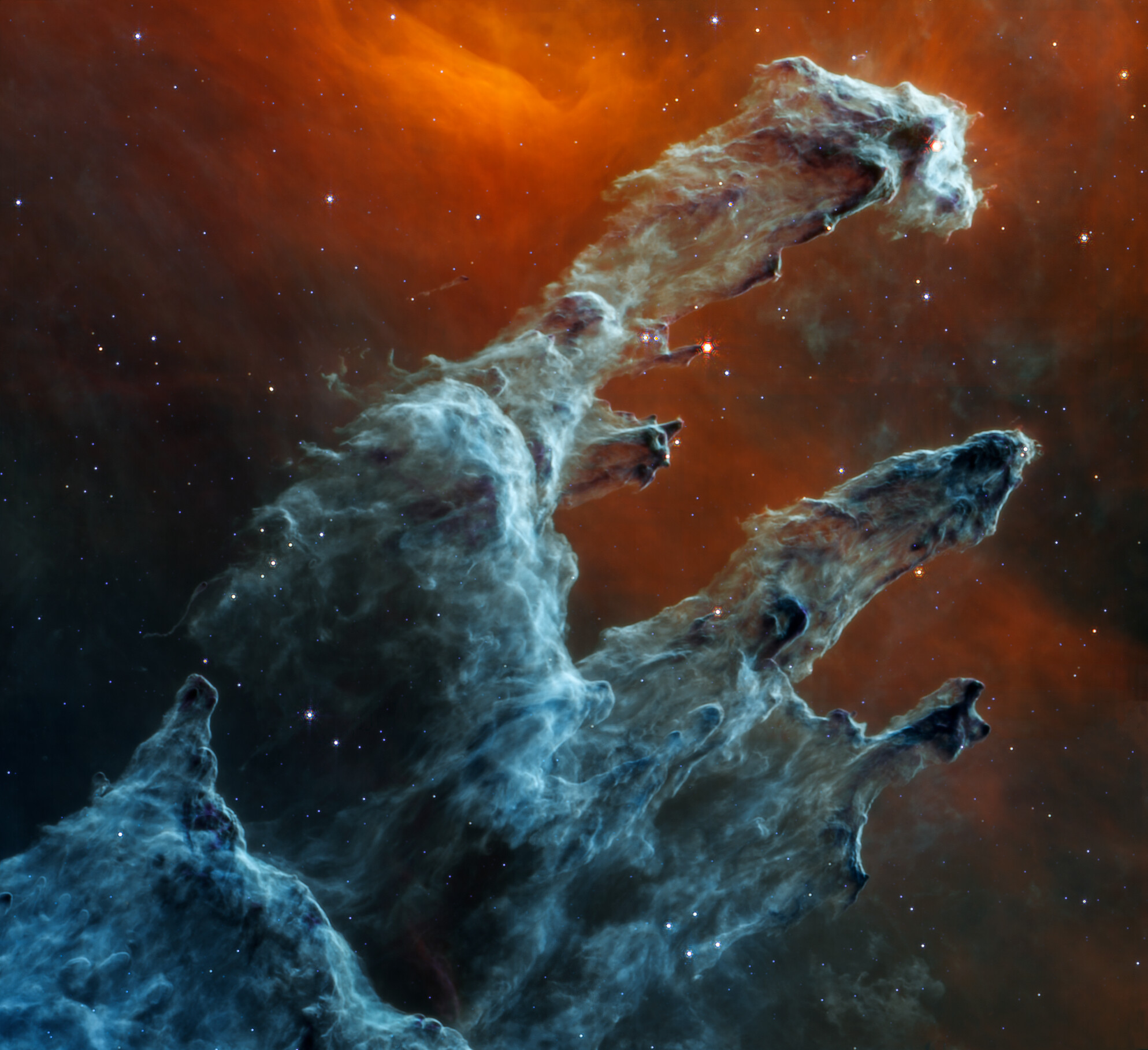In 1995, the Hubble Space Telescope released images of the Pillars of Creation, stunning sparkling clouds of interstellar dust and gas that are where stars are born.
Now, merge the data from Hubble And the James Webb Space TelescopeNASA has released a stunning 3D visualization of cosmic structures in visible and infrared light.
“By flying through and between the columns, viewers experience their 3D structure and see how different they look in Hubble’s visible light show versus Webb’s infrared show,” said lead visualization scientist Frank Summers. He said in a statement.
He added, “The contrast helps them understand why there is more than one space telescope to observe different aspects of the same object.”
the Pillars of creation, It is located about 5,700 light-years from Earth, and consists of cold molecular hydrogen and dust. Due to strong winds and radiation from nearby hot stars, the columns began to be stripped of their contents. Long, finger-like structures can be seen emerging from the top of the columns, and they are larger than ours Solar System.
Inside these structures, hydrogen and dust collapse under gravity to form new baby stars. These new stars will help continue to disperse material into the pillars. The longest pillars span 30 … Light years From top to bottom – three-quarters of the distance between the Sun and our nearest star.
The newly released video is based on observational data collected for a study authored by Anna McLeod of Durham University in England, who also served as a scientific advisor for the visualization project.
“When we combine observations from NASA space telescopes across different wavelengths of light, we expand our understanding of… UniverseMark Clampin, director of the Astrophysics Division at NASA Headquarters in Washington, said:
“The Pillars of Creation region continues to provide us with new insights that enhance our understanding of how stars form,” Clampin added. “Now, with this new visualization, everyone can experience this rich and captivating landscape in a new way.”
During the visualization, viewers can catch glimpses of the stars in different stages of formation. For example, at the top of the central column, viewers can see a compact protostar, which is bright red when viewed in infrared light. Near the top of the left column is a diagonal stream of material being ejected from a newborn star, although viewers cannot see the star itself. At the end of the “fingers” of the left columns, viewers can see a newly formed glowing star.

“Beer aficionado. Gamer. Alcohol fanatic. Evil food trailblazer. Avid bacon maven.”


